Curation
Facility
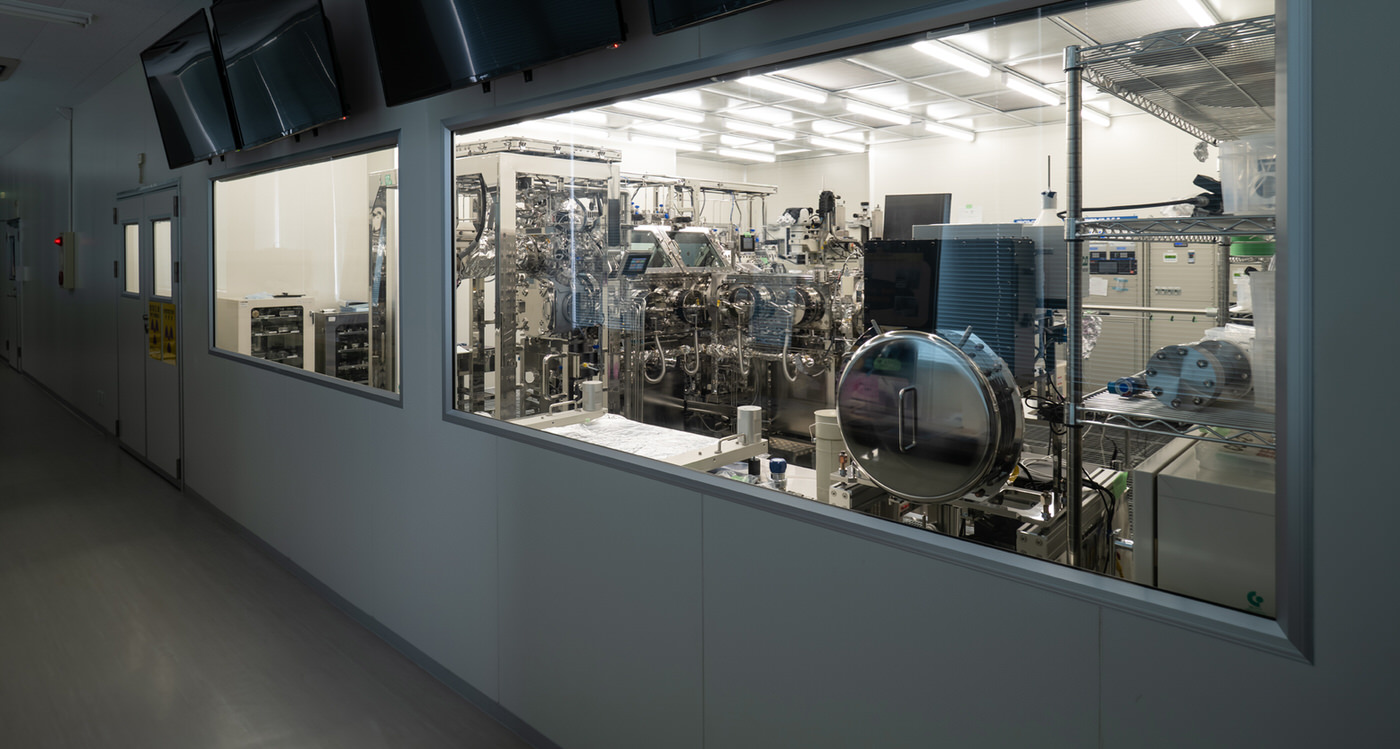
Clean Room
-
A clean room is a room that reduces suspended dust by circulating air through an air filter (HEPA). According to ISO and other standards, cleanliness is classified according to the size and amount of suspended dust. Clean rooms of Extraterrestrial Sample Curation Center (ESCuC) are in classes 1,000 and 10,000. Not only does it reduce floating dust, but it also controls temperature and humidity (Room temperature 22 ± 2 ° C, humidity 50 ± 10%). Maintaining room temperature stabilizes equipment and keeping humidity high reduces the adhesion of floating dust due to charging. In addition, the room pressure of the clean room is kept higher than outside (10 pascals or more) to prevent dust from entering from outside.*Class 100 means that a volume of one cubic foot contains less than 100 suspended particles of diameter 0.5 micrometers or larger, Class 1000 less than 1000, and Class 10,000 less than 10,000. Classes 100, 1000 and 10,000 correspond to the ISO standard classes 5, 6 and 7, respectively.
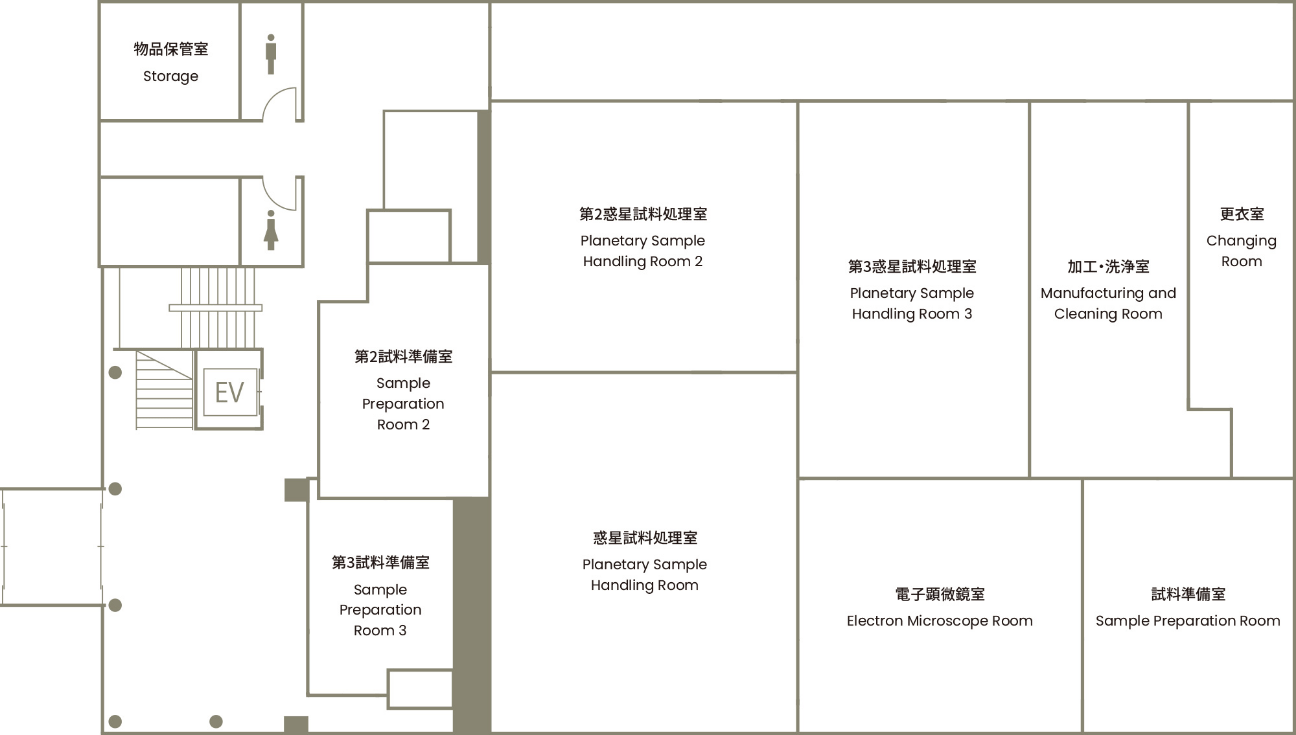
-
 Manufacturing and Cleaning Room (class 10,000)
Manufacturing and Cleaning Room (class 10,000)A Microtome, an acrylic nitrogen-purged glove box and ultrasonic cleaning baths are installed. There are some small rooms: a room for organic solvent cleaning operations with local exhaust and draft, a room with baking chambers and other cleaning equipment (a CO2 blaster, a plasma cleaner, and an ozone cleaner), and a room with a milling machine for removing the ablator of the return sample capsule.
-
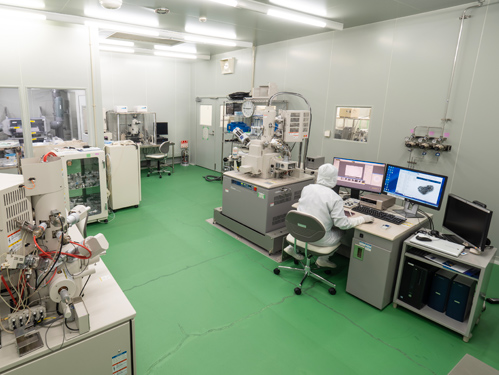 Sample Preparation Room (class 10,000)
Sample Preparation Room (class 10,000)A Field Emission Scanning Electron Microscope (FE-SEM) and a Focused Ion Beam System (FIB) SEM are installed. Some optical microscopes have manipulators for handling small particles. There is a small room for acid and alkali cleaning.
-
 Electron Microscope Room (class 1,000)
Electron Microscope Room (class 1,000)A FE-SEM, a Fourier Transform Infrared Spectroscopy (FTIR), a Raman Spectrometer, an X-ray Diffractometer, optical microscopes, an acrylic and a stainless-steel nitrogen-purged glove boxes are installed.
-
 Planetary Sample Handling Room 2 (class 1,000)
Planetary Sample Handling Room 2 (class 1,000)The Hayabusa2 clean chamber(s) are installed. The floor is a grating structure to prevent dust from rolling up from the floor by walking.
-
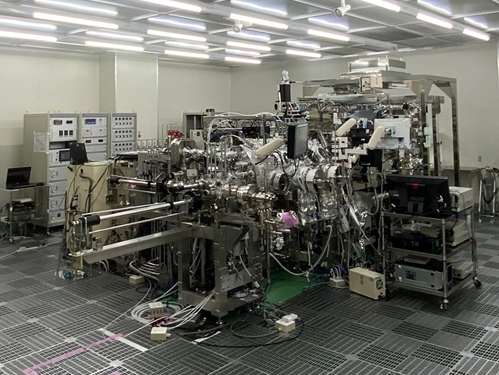 Planetary Sample Handling Room (class 1,000)
Planetary Sample Handling Room (class 1,000)The Hayabusa clean chamber(s) and an all-stainless-steel clean bench, free organic substances, are installed. Locally implements class 100 by layout of HEPA filter on the ceiling. Not only HEPA filter but also organic chemical filters are installed to reduce halogen, sulfide, nitride, boron and boron compound in atmosphere. The floor has a grating structure to prevent rubbish from rolling up from the floor by walking.
-
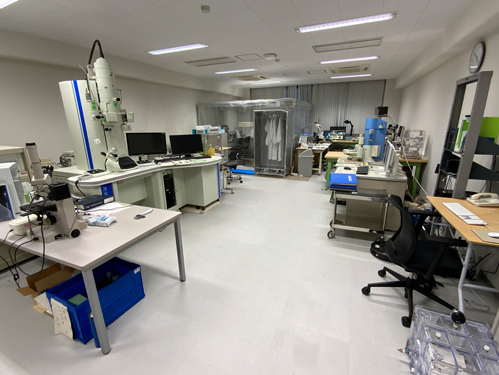 Other Laboratories (not clean room)
Other Laboratories (not clean room)ESCuC has laboratories other than clean rooms and are equipped with analytical instruments such as a SEM, a FIB-SEM and a Transmission Electron Microscope (TEM), as well as instruments for making thin-sections of rocks. In addition, there is a clean booth where microscopic samples can be handled using a microscope and a manipulator.
-
 Planetary Sample Preparation Room 2 (class 1,000)
Planetary Sample Preparation Room 2 (class 1,000)It is a general-purpose cleanroom that can be used for tool maintenance and sample analysis. It was newly built in 2022 by expanding the previously available cleanroom area. Currently, FTIR and laser Raman spectrometers, tools for handling small materials, and various microscopes are available in this clean room.
-
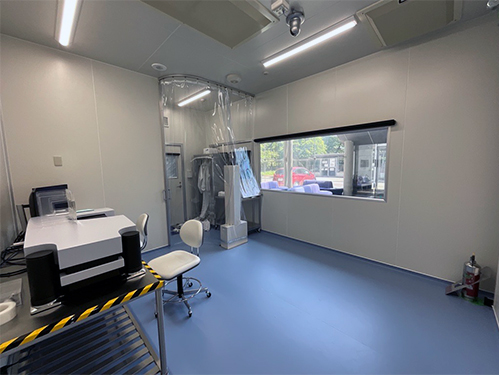 Planetary Sample Preparation Room 3 (class 1,000)
Planetary Sample Preparation Room 3 (class 1,000)It is a general-purpose clean room that can be used for tool maintenance and sample analysis. It was newly constructed in 2022 by expanding the previously available clean room area. Currently, an X-ray CT scanner is installed in this clean room.
-
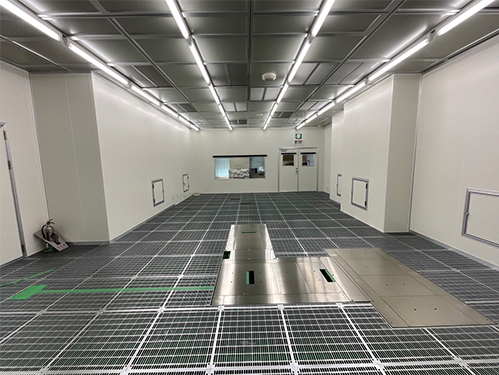 Planetary Sample Handling Room 3 (class 1,000)
Planetary Sample Handling Room 3 (class 1,000)We are planning to install a new clean chamber to handle a portion of the Bennu samples returned by OSIRIS-REx mission (NASA). Similar to the clean rooms for Hayabusa and Hayabusa2, the sample floor is designed with a grating (wire mesh) structure.
-
 Liquid Nitrogen Cold Evaporator
Liquid Nitrogen Cold EvaporatorThe liquid nitrogen cold evaporator is a large tank of liquid nitrogen used as an equipment to vaporize the liquid nitrogen and supply nitrogen gas. In the planetary material sample receiving facility, nitrogen gas is constantly consumed to store the returned samples in a nitrogen gas atmosphere, preventing them from coming into contact with Earth's atmosphere. Following the examples of Hayabusa and Hayabusa2, we have transitioned from the conventional liquid nitrogen LGC (tank) operation to cold evaporator operation to manage a portion of the OSIRIS-REx samples. This provides more stable supplies of nitrogen, which allows to handle more samples in the CC. It is important to note that the nitrogen gas supplied from the cold evaporator to the facility undergoes purification within the facility's equipment to achieve high-purity nitrogen gas. This purification process helps to minimize sample contamination as much as possible.
Clean Chamber
-
Clean chamber here is the name of a vacuum chamber or nitrogen-containing glove box manufactured for the storage and handling of the return samples. The returned samples must be handled in an environment that is isolated from the outside in order to avoid material changes and pollution (contamination) due to the earth's atmosphere and dust. The basic material of the clean chamber is stainless steel (SUS304). The parts facing the room are electrolytic polished. The vacuum chamber has high vacuum performance (1E-8 to 1E-6 Pa), and the nitrogen atmosphere glove box uses high purity nitrogen, which removes oxygen and moisture as much as possible (-80 to -100 degree Celsius, dew point). There are clean chambers for Hayabusa and Hayabusa2 with 2 and 5 connected clean chambers respectively.
-
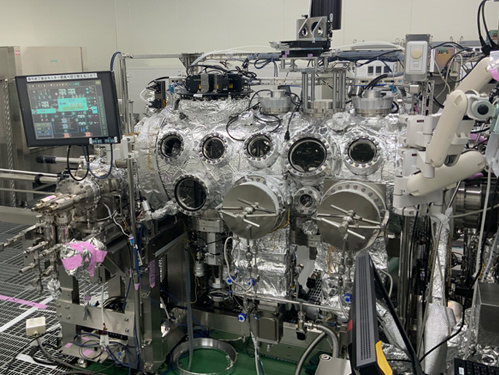 Clean Chamber 1 (CC1)
Clean Chamber 1 (CC1)Hayabusa sample container was introduced and the cover was opened in a vacuum atmosphere. A microscope with a long working distance has been equipped, and the inside of the container was observed after opening. The sample containers are still being stored in a vacuum atmosphere. After the sample catcher was removed from the container, sample was stored stably in a nitrogen atmosphere.
-
 Clean Chamber 2 (CC2)
Clean Chamber 2 (CC2)CC2 is a glove box with pure nitrogen atmosphere connected to CC1. It is used for handling the Itokawa sample, and a microscope and an electrostatic control manipulator are equipped in the room. Although it has not been used in practice, it has various functions such as connection to a microbalance and a mechanism to seal the sample in a quartz ampoule so that various responses can be made when the sample is received.
-
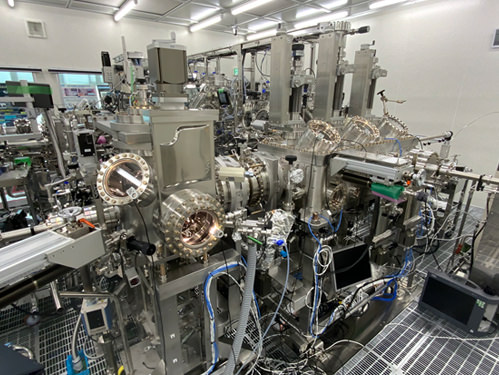 Clean Chamber 3-1 and 3-2 (CC3-1 and CC3-2)
Clean Chamber 3-1 and 3-2 (CC3-1 and CC3-2)CC3-1 features for introducing the Hayabusa2 sample container and opening it in a vacuum environment. CC3-2 has a function of collecting some particles of the sample from the sample catcher in a vacuum environment. The chambers are operated in a vacuum atmosphere using linear motion manipulators and transfer rods.
-
 Clean Chamber 3-3 (CC3-3)
Clean Chamber 3-3 (CC3-3)CC3-3 is connected to CC3-2, the sample catcher can be received in a vacuum atmosphere. After receiving the catcher, it is treated as a glove box with pure nitrogen atmosphere. The CC3-3 is also connected to a small extended chamber for MicrOmega.
-
 Clean Chamber 4-1 and 4-2 (CC4-1 and CC4-2)
Clean Chamber 4-1 and 4-2 (CC4-1 and CC4-2)CC4-1 is a pure nitrogen atmosphere glove box connected to CC3-3. The design of CC4-1 was based on CC2, and it is possible to bring a large device into a large room and handle samples. CC4-2 has a large window on the top surface and is suitable for observing samples. Photographing with an optical microscope and weighing are also performed. CC4-2 can be connected to a small chamber for FTIR.
Preparation or Cleaning Tools/Instruments
-
 Laser Puller (Model P-2000)
Laser Puller (Model P-2000)A device for manufacturing quartz needle of the Electrostatic Control Manipulator.
-
 Ultrasonic Cleaner (PhenixII, Quava)
Ultrasonic Cleaner (PhenixII, Quava)A device for cleaning sample handling tools. There are several types of cleaning tanks with different frequencies (38 kHz, 950 kHz). Ultrasonic cleaning with pure-water overflowing is available.
-
 Dry Ice (CO2) Blast Cleaner (QuickSnow)
Dry Ice (CO2) Blast Cleaner (QuickSnow)A device for cleaning sample handling tools. Fine particles of dry ice are refined from carbon dioxide gas and sprayed on the surface of the device to repel dust.
-
 Atmospheric Pressure Plasma Washer (PlasmaBeam)
Atmospheric Pressure Plasma Washer (PlasmaBeam)A device for cleaning sample handling tools. The high temperature of the plasma incinerates and removes organic matter on the surface of the tools.
-
 UV Ozone Cleaner (UV253S)
UV Ozone Cleaner (UV253S)A device for cleaning sample handling tools. Decomposes and removes organic substances on the surface of the tools.
-
 Clean Evaporator
Clean EvaporatorA device for boiling acids and alkalis when tool cleaning work.
-
 Fume Hood
Fume HoodA device for utilizing organic solvent, acid or alkali in cleaning apparatus.
-
 Clean Dryer (PC2-1014-DRYER)
Clean Dryer (PC2-1014-DRYER)A device for drying tools after washing. Filtered air by HEPA can be blown at high temperature.
-
 Vacuumed Baking Chamber (MB07-10020C)
Vacuumed Baking Chamber (MB07-10020C)A device for "baking" tools. When handling tools in a chamber vacuum or in a high-purity nitrogen atmosphere, moisture adhering to the tools surface may evaporate or volatile gas may be released from the material itself, causing sample contamination. To solve these problems, some equipment should be baked at high temperature under vacuum for a long time before it is brought into a clean chamber.
-
 Nitrogen Purged Desiccator
Nitrogen Purged DesiccatorA container for storing sample handling tools under nitrogen atmosphere.
Equipment for Sample Handling Environment
-
 Nitrogen Purged, Stainless Steel, Glove Box
Nitrogen Purged, Stainless Steel, Glove Box -
 Nitrogen Purged, acrylic, Glove Box
Nitrogen Purged, acrylic, Glove Box -
 Clean Bench (VS1305LS)
Clean Bench (VS1305LS)A clean bench with HEPA filter and is made of stainless steel to reduce organic matters contamination.
Analysis Equipment
-
 Field-Emission Scanning Electron Microscope (FE-SEM), Energy Dispersive X-ray Spectroscopy (EDS), Electron Backscatter Diffraction (EBSD) (S-4300SE/N, SU6600)
Field-Emission Scanning Electron Microscope (FE-SEM), Energy Dispersive X-ray Spectroscopy (EDS), Electron Backscatter Diffraction (EBSD) (S-4300SE/N, SU6600)There are two SEM with EDSs in the clean room. They are used for the Initial Description of the returned sample. These sample exchange rooms were arranged to exchange samples under high-purity nitrogen environment and sealed sample container can be opened.
-
 X-ray Diffraction Analyzer (XRD, RINT Rapid 191R)
X-ray Diffraction Analyzer (XRD, RINT Rapid 191R) -
 Infrared microscope + Fourier Transform Infrared Spectrometer (FTIR, IRT-5000 + FTIR 6100)
Infrared microscope + Fourier Transform Infrared Spectrometer (FTIR, IRT-5000 + FTIR 6100) -
 Laser Raman Spectroscopy (NRS-5100)
Laser Raman Spectroscopy (NRS-5100) -
 Transmission Electron Microscope (TEM, JEM-1400Plus)
Transmission Electron Microscope (TEM, JEM-1400Plus) -
 Triple Beam FIB-SEM-Ar Combined System (FIB-SEM, NX2000)
Triple Beam FIB-SEM-Ar Combined System (FIB-SEM, NX2000) -
 Field Emission Electron Probe Microanalyzer (FE-EPMA, JXA-iHP200F), Soft X-Ray Emission Spectrometer(SXES)
Field Emission Electron Probe Microanalyzer (FE-EPMA, JXA-iHP200F), Soft X-Ray Emission Spectrometer(SXES)FE-EPMA is used to textural observation of samples. A very fine focused electron beam can observe the microstructures of rocks and minerals down to 1 μm. FE-EPMA can nondestructively analyze the quantitative and qualitative analyses of the chemical compositions of minerals and rocks with WDS, EDS, and SXES. SXES can detect light elements such as lithium (Li) and provide information on the chemical bonding state of compounds.
-
 Ultra-Microtome (EM UC7)
Ultra-Microtome (EM UC7) -
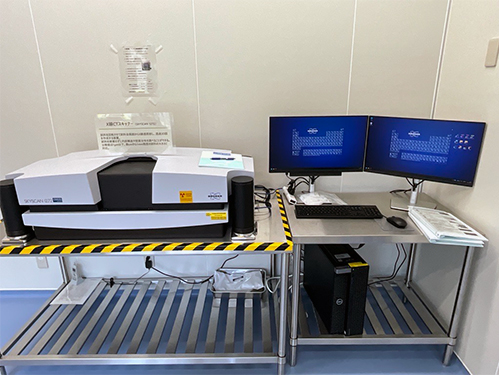 Desktop XCT (SKYSCAN 1272 CMOS Edition, Bruker)
Desktop XCT (SKYSCAN 1272 CMOS Edition, Bruker)A desktop X-ray CT scanner, Skyscan 1272 is a compact high resolution X-ray microscope that allows to examine the internal structure of samples non-destructively. This CT machine has a scanning envelope of up to approximately 100 mm in height and 75 mm in diameter. The achievable highest resolution is less than 1 um.
-
 ICP-MS with Gas Introduction System (8900 ICP-QQQ, Agilent with GED, MSAG, IAS Inc.)
ICP-MS with Gas Introduction System (8900 ICP-QQQ, Agilent with GED, MSAG, IAS Inc.)This is an instrument used for environmental analysis of clean rooms and clean chambers, as well as chemical analysis of samples. The 8900 ICP-QQQ is a triple quadrupole mass spectrometer that is expected to remove interfering ions and analyze nanoparticles. As a pre-processing device, it is equipped with a Gas Exchange Device (GED) for introducing metal nanoparticles into the inlet system. The GED allows to capture the desired atmosphere and enables easy and highly sensitive evaluation of metal concentrations in the atmosphere using ICP-MS. Metal Standard Aerosol Generation (MSAG) is able to provide a stable supply of tiny amounts of aerosolized standard solution.
Analysis Equipment on the Clean Chambers
-
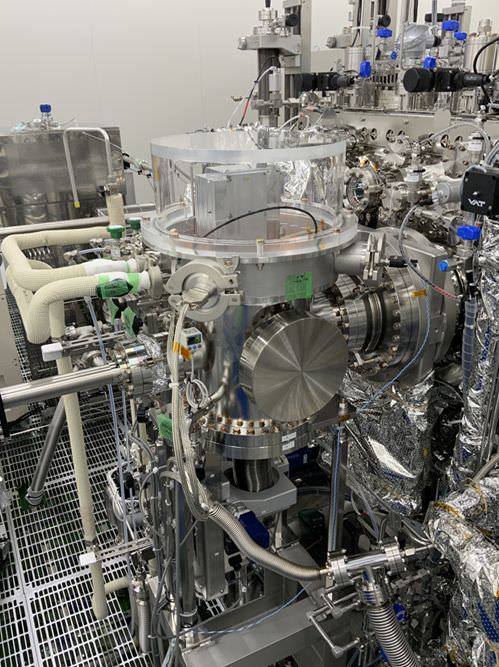 Near-IR Hyperspectral Microscope (MicrOmega)
Near-IR Hyperspectral Microscope (MicrOmega)Apparatus for infrared spectroscopic analysis of the Ryugu sample in the clean chamber. An extended chamber mounting MicrOmega can be connected to CC3-3. It is expected that the analytical results of the Ryugu surface by the probe Hayabusa2 will be compared with the analytical results of the returned sample by this device. This apparatus was installed with cooperation with IAS team, France.
-
 Infrared microscope + Fourier Transform Infrared Spectrometer (FTIR)
Infrared microscope + Fourier Transform Infrared Spectrometer (FTIR)Apparatus for infrared spectroscopic analysis of the Ryugu sample in the clean chamber. An extended chamber mounting FTIR can be connected to CC4-2. It is expected that the analytical results of the Ryugu surface by the probe Hayabusa2 will be compared with the analytical results of the returned sample by this device.
-
 Atmospheric Pressure Ionization Mass Spectrometer (API-MS, UG-510P/APIMS-200)
Atmospheric Pressure Ionization Mass Spectrometer (API-MS, UG-510P/APIMS-200)Apparatus for evaluating environment of atmosphere in the clean chamber. There are two units for Hayabusa and Hayabusa2. It can detect mass numbers from 3 to 200 with high sensitivity, and measures mainly water, oxygen, carbon dioxide and methane gas at ppb (parts-per-billion) level.
Other Instruments
-
 Isotope Ratio Mass Spectrometer (IR-MS, DELTA V ADVANTAGE)
Isotope Ratio Mass Spectrometer (IR-MS, DELTA V ADVANTAGE)Stable isotope ratio mass spectrometer capable of highly accurate analysis of hydrogen, nitrogen, oxygen and carbon dioxide. ASRG is studying the development of a device capable of analyzing the isotopic ratio of the extraterrestrial atmosphere with high sensitivity as a device mounted on a planetary probe.
Curation
Curation
- TOP
- Facility
